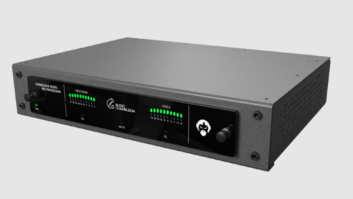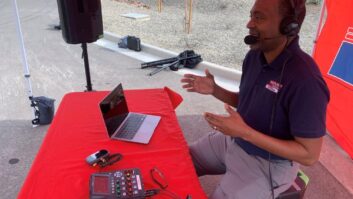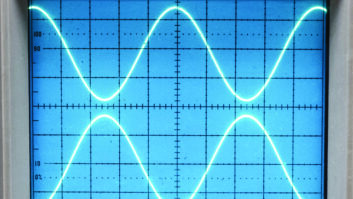WATERFORD, Ireland — When iRadio, Ireland’s new regional, CHR radio station was built in Galway, the owners along with my company, Total Broadcast Consultants, decided it should be the country’s first all-digital radio station.
That meant that after the mics, the entire transmission chain would not leave the digital domain until it hit the transmitters (all 10 of them!).
SIMPLER THE SECOND TIME
In that five-studio installation in 2008, we used over €4,500-worth (~$6,000) of multicore cabling, punchblocks, connectors, terminations, etc. The studio installation took a five-man team five weeks to complete, what with running the cable throughout the facility and soldering countless connectors. One wall of the central rack room was taken up by a Krone punchblock field and we had to use countless boxes like distribution amplifiers, word clock generators and switchers to make it all work.

The results were good, although there were many problems along the way, chiefly in getting the consoles to talk to other equipment and programming the consoles themselves, which wasn’t easy. I was not impressed with the support from the console manufacturer — often there being no call-backs, which I regarded as inexcusable for a company in the same time zone.
In fact, it was a huge headache!
A year later, the broadcast company secured a second regional licence, this time to cover the midlands and northeast of Ireland using a second base, in the town of Athlone (the site of the world’s first national broadcast transmitter nearly 100 years earlier!) with four studios feeding eight transmitter sites via satellite. They wanted to go all-digital again.
In the interim my company had formed a partnership with Axia, and given what I’d learned from talking with the guys from Cleveland, I was pretty confident that if we used the Axia IP-based console and routing system, it would be a lot more straightforward this time.
With this installation, using Axia Element consoles, mixing engines, nodes and more, in the entire installation we used — wait for it — a single 300-meter (985 feet) roll of Cat-6 cable (cost: €100= $130).
I got the IT contractor to run the cable and terminate and test it.
I personally carried out the installation with two other men. After just one week we had audio playing in the studios. The guys from our automation provider, RCS, had never used the Axia IP-drivers instead of soundcards before, and were amazed when it just worked.
I had never programmed an Axia system. I was fortunate that Kirk Harnack of Telos/Axia was visiting Ireland at that time and gave me a brief starter course.
I was able to get the whole facility programmed and working in two days, even getting some complex studio switching and intercoms working using the company’s Pathfinder Pro — with the excellent assistance of Axia tech support.
The station management was delighted, and the on-air staff loves the studios. This was Ireland’s first IP-based radio facility — still perfect “digital” quality all the way through, and it showed off Axia’s networked audio well.
And aside from a headache endured after the opening party, I had no need for pain killers at any time.
For information, contact Clark Novak at Axia Audio in Ohio at (216) 241-7225 or visit www.axiaaudio.com.
Radio World User Reports are unpaid testimonials; they are intended to allow equipment users to explain why they chose a particular product. Radio World Product Evaluations, by comparison, are paid articles written by a contributing reviewer, usually an engineer.












